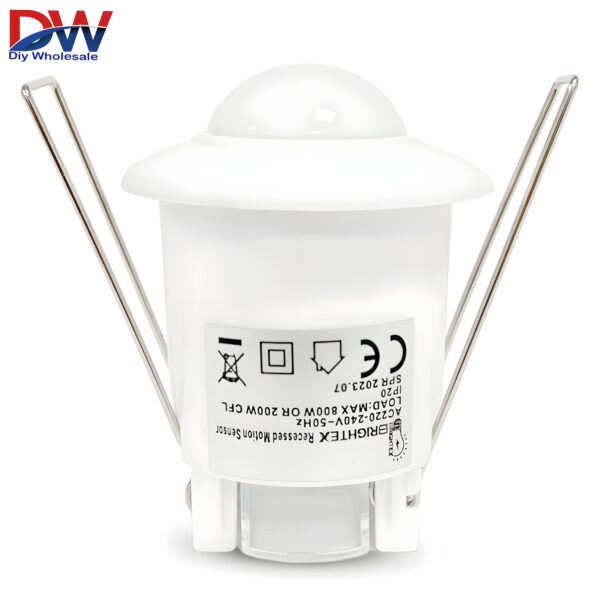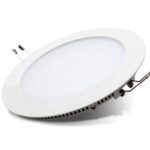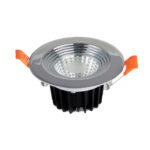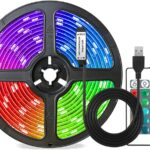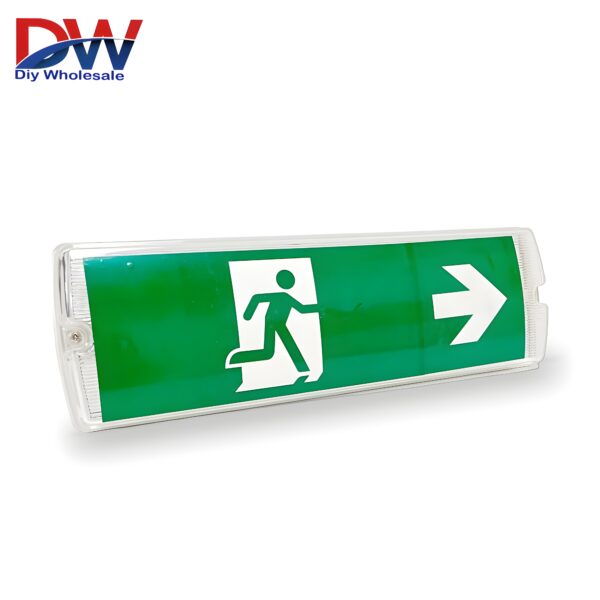

Infrared Surface Motion Sensor light
£5.60 Inc. Tax£5.60 Exc. Tax
| Model | MSS-1 |
| Wattage | 800W |
| 200W | |
| Voltage | AC220-240V |
| Frequency | 50/60Hz |
| Time setting | 7min |
| Light -control | <3 -2000 LUX |
| Size | 90x30mm |
| Detection-range | 8m Max(24 °C) |
| Detection-angle | 360 ° |
| Working Temperature | -20°C~+40°C |
| Working humidity | <93%RH |
| Installation height | 2.2m~4m |
| Power consumption | 0.5W |
| Detection speed | 0.6~1.5m/s |
About Infrared Surface Motion Sensor light
An infrared surface motion sensor is a device designed to detect motion or movement in its immediate vicinity. These sensors are often used for various purposes, including security systems, automatic lighting control, and energy conservation. Here’s a general description of an infrared surface motion sensor:
- Technology: Infrared surface motion sensors typically employ passive infrared (PIR) technology. They detect changes in heat patterns in their field of view. When an object, such as a person, moves within the sensor’s range, it triggers a response.
- Surface-Mounted Design: The term “surface” indicates that these sensors are designed to be installed on the surface of a wall, ceiling, or another flat area. They are visible and do not require recessed installation. This makes them suitable for both commercial and residential settings.
- Detection Range: The detection range of an infrared surface motion sensor can vary based on the specific model and application. Some sensors are designed for short-range detection, while others have a longer detection range, making them suitable for larger areas.
- Sensitivity Adjustment: Many surface-mounted motion sensors allow users to adjust the sensitivity and detection angle to customize the sensor’s response to motion. This feature is valuable for fine-tuning the sensor’s performance to specific needs.
- Applications:
- Automatic Lighting Control: Surface-mounted motion sensors are commonly used to control lighting in spaces like offices, hallways, restrooms, and warehouses. When motion is detected, the sensor triggers the lights to turn on, and they automatically turn off when the space is unoccupied, promoting energy efficiency.
- Security Systems: These sensors are often integrated into security systems to detect unauthorized entry or movement within a specific area. When motion is detected, an alarm or notification can be triggered.
- Home Automation: They can be part of home automation systems, enabling the automation of various tasks like turning on lights, adjusting thermostats, or activating other smart devices when motion is detected.
- Installation: Surface-mounted motion sensors are relatively easy to install and do not require cutting into walls or ceilings. They are typically mounted using screws, adhesive backing, or other fasteners.
- Power Efficiency: Surface-mounted motion sensors are highly power-efficient, as they are only active when motion is detected. This helps conserve energy and extend the life of connected devices or lighting.
- Environmental Impact: The use of surface-mounted motion sensors can contribute to energy savings and lower carbon emissions by ensuring that lights and other devices are only active when needed, promoting energy efficiency and environmental sustainability.
Also Check:
Delivery
Free delivery for order over £50
All orders are sent out in a daily basis. In normal cases it should be delivered within 2-3 days. Please speak to one of our team in case your order didn’t arrive within 5 days from the order placing date.
Once you place the order, you will receive a confirmation email with VAT invoice attached and followed by another email with your order tracking number.
Return
All items are subject to 30 days return with full refund or replacement as long as the items is returned in the same condition as it delivered (Product is not used and box are intact).
All items are subject to 12 months return in case of manufacture faults.
We pay for the faulty items post in case we need to collect the faulty items. We pay also for the post of the replacement.
If it posted, faulty items will be replaced once received and tested.
All items should be used as per the specs mentioned on the boxes, For example, IP20 items are not usable for outdoors
Above conditions are apply for all items except customed items (Like printed sky panels light that are printed on request, or cut led strips, or similar items that are customed as per customer requests) or wherever stated
Items that have signs of repair, modification or tampered are not obliged to offer a refund or exchange
How can I get VAT invoice?
Once payment is done, you will receive email confirmation with VAT invoice attached with the email.
How can I track my orders?
After payment, you will receive email with the tracking number of your order.
How can I cancel part of the order or the full order?
You can use any of our communication channels to arrange the cancelation and item return, if any.
How can I get refunded?
We process the refund immediately after receiving the returned items and do the proper inspection. The payment will be processed using the same original payment method
How can I make change to my order (include change of the delivery address)?
You can use any of our communication channels to change any part of your order.
What I do if I face any issue with my order, include delivery issues?
You can use any of our communication channels to report the issue. Rest assure that we will solve it ASAP.
What does the 30 days free returns means?
All our products are returnable within 30 days of the invoice date with full refund.
When to collect my items, if I choose collection option?
You need to arrange with us via any of our communication channels to arrange for pickup schedule.
What I do if I face any issue or have any inquiry?
We are reachable 24/7 over WhatsApp, live chat, messenger, and emails.
























